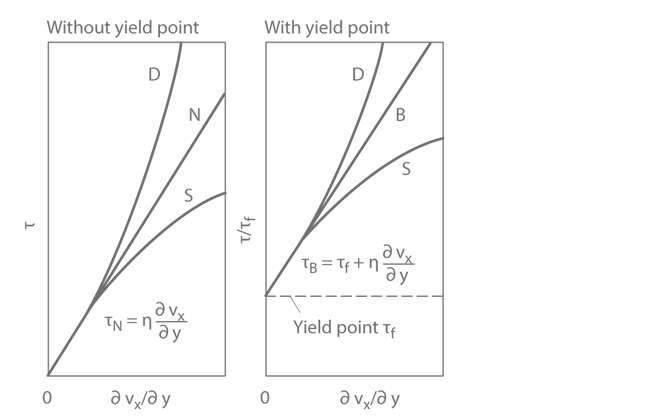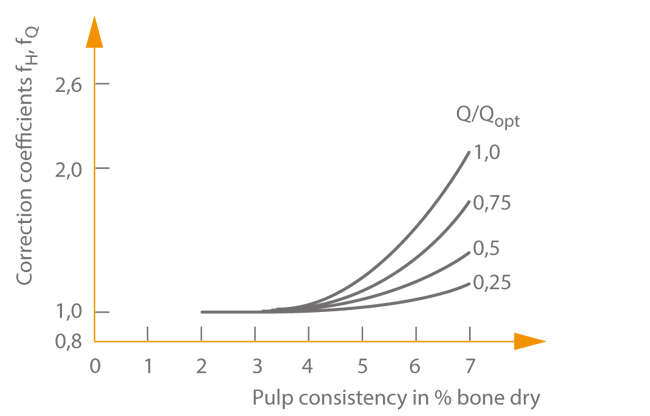Pulp pumping
Pulp pumping refers to the transportation of pulp suspensions of various pulp consistencies and types (e.g. fibrous material or slurries) by means of conventional centrifugal or pulp pumps in the cellulose and paper industry.
Pulp types
Cellulose is an important raw material for the manufacture of paper, artificial silk (rayon), rayon staple (synthetic wool) and nitrocellulose.
Depending on the base product, cellulose is subdivided into wood pulp from leaf woods (hardwoods) and pine woods (soft woods), straw pulp and other types of cellulose which originate from various raw material sources such as bagasse (sugar cane waste after crushing), reeds or bamboo cane. Cellulose is also classed as either sulphate cellulose or sulphite cellulose according to the chemical treatment process it undergoes.
Wood pulp, also known as mechanical wood pulp, is prepared mechanically by grinding down decorticated hardwood or soft wood. Wood pulp is an important base product for the manufacture of paper and cardboard (paper pulp or stock).
Flow behaviour
In contrast to solids transport, where a distinction between the solid matter and the carrier liquid is possible, the suspensions created when cellulose and paper industry pulp floats in water exhibit specific flow behaviour which must be taken into account when designing (see Design point) pumps to handle them. This behaviour depends on both the pulp type (base product, treatment processes, admixtures) and pulp consistency.
Viscous liquids are classified as follows according to their flow behaviour: when the shear stress is proportional to the velocity gradient (∂vx/∂y), the liquid in question is a Newtonian or normal viscosity liquid to which the laws of fluid mechanics apply. All other types of liquids are referred
to as abnormal viscosity or non-Newtonian liquids; their fluid dynamics are the focus of rheology.
to as abnormal viscosity or non-Newtonian liquids; their fluid dynamics are the focus of rheology.
Pulp pumping also deals with these fluids; they are categorised according to their shear behaviour where deformation depends on the magnitude, variation or duration of forces acting upon them. See Fig. 1 Pulp pumping

Fig. 1 Pulp pumping: Graphs showing the flow characteristics of viscous fluids; N Newtonian, B Bingham, S Structurally viscous, and D Dilatant fluids
Flow behaviour of abnormal viscosity fluids
- Bingham plastic (e.g. paste): shear stress has a finite yield point.
- Dilatant fluid (e.g. PVC): shear stress increases progressively in relation to the velocity gradient, but independent of time.
- Shear thinning or pseudoplastic fluids (e.g. biogas, liquid rubber):
shear stress increases digressively in relation to the velocity gradient, but independent of time. - Rheopectic fluid (e.g. gypsum paste): viscosity increases over time at constant shear stress. Here, the velocity gradient can be related to time.
- Thixotropic fluid (e.g. paint): viscosity decreases with time which can also be observed with certain paints. When stirred they become thinner.
- Viscoelastic fluids (e.g. bitumen): they exhibit both viscous and elastic characteristics. Characteristic for these fluid types is their changing with time and the fact that their velocity gradients are dependent upon shear stress.
Given the complexity of these influences on flow behaviour, it is understandable that the following data can only apply to special pulp types and concentrations. Particularly when converting the flow rate and head of centrifugal pumps used in pulp pumping, the correction coefficients may only be used for general reference purposes. See Fig. 2 Pulp pumping

Fig. 2 Pulp pumping: Empirically calculated general correction coefficients fH, fQ used for the conversion of a centrifugal pump's flow rate and head for pulp transport; pump selection requires that the pump data is converted to water values; Q/Qopt refers to a characteristic curve for water
It is possible to roughly determine the change in a centrifugal pump's characteristic curve – depending on the operating point's position on the curve – using the empirically established correction coefficients fQ and fH.

Q Pump flow rate
H Pump head
P Pump input power
W Index for water pumping
St Index for pulp pumping
H Pump head
P Pump input power
W Index for water pumping
St Index for pulp pumping
When calculating the system characteristic curve it is important to take into account that head losses in the piping and valves are dependent on the pulp concentration.
In many cases, laboratory tests with the fluid handled are required to determine the flow curves.
Alongside pulp consistency and air content, the pulp types and the degree of grinding have a fundamental influence on the pump's design. While pulp consistency and the degree of grinding determine the pump type, size and impeller type, the pulp type is crucial for the correct material selection.
Depending on the treatment process and the pump's application, the wetted components are made from either cast iron, bronze, alloyed cast steel or cast iron with hard rubber lining. Hard-rubber lined pumps are, for instance, employed in pulp bleaching as the above mentioned metal materials would corrode due to the high content of free chloride in the chemicals used for bleaching.
